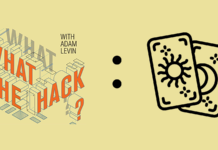

Just how many Americans have been victims of identity theft? No one really knows, but rest assured it’s more than a handful.
The FTC estimates that more than 9 million Americans become victims of identity theft each year. And according to a Javelin study conducted in 2009, that number jumps to 11.1 million consumers, costing a total of $54 billion in damages.
Honestly, I think all of these numbers are low. And regardless of whether the number of instances of identity theft is 10 or 20 or even 100 million, each of us should take steps to protect ourselves.
By understanding what identity thieves are looking for, and being aware of how they’re gaining access to personal financial information, you can be proactive safeguarding your own. To get you started in the right direction, we’ve pulled together a few of our top tips for protecting your personal identifying information. By using a little common sense and following these 12 tips, you’ll stay one step ahead of identity thieves:
1. Protect Your Social Security Number
A name and a Social Security number is all an identity thief needs to do some serious damage. Unless you’re applying for a job, filing your taxes, or applying for a loan — be very stingy when it comes to sharing your SSN. Before you give out this information, make sure you know who you’re dealing with and why they need it. You should also avoid carrying your Social Security card around with you – don’t carry it in your wallet! Keep it safe in a locked drawer or filing cabinet at home. And if your Social Security number is used as your ID number on your drivers license or insurance card, request that they assign an alternate number. And lastly, keep your SSN and driver’s license numbers off your checks, and do not allow merchants to write either of them on your checks either.
2. Guard Your Financial Information
Never release any of your personal identifying information, credit card or bank account numbers over the telephone, over the Internet, or by mail –unless you have a trusted business relationship with the company and you have initiated the contact. Find a safe place for your sensitive financial information. Put bank statements, credit card statements, student credit cards, online financial passwords, your Social Security card, health insurance card, and other financial and medical records in a locked draw or locked filing cabinet. Shred all financial and medical information that you don’t want to keep.
3. Protect Your PINs & Beware of Shoulder Surfers
Don’t share the personal identification number for your ATM card, debit card or credit card with anyone. Be aware of your surroundings and use your hand to shield your PIN if there are people standing too close to you. Technology has come a long way and unfortunately, so have identity thieves. With the invention of camera phones it only takes a shoulder surfer a matter of seconds to steal your information. Likewise, make sure you use a trusted ATM machine. Crooks have mastered the use of “ATM skimmers” and it can be hard to tell the difference between a legitimate ATM machine and one that has a skimming device added. Increased awareness and an eye for detail can protect you from granting a skimmer full access to your banking account. This tip goes for all PIN numbers, including the PIN numbers and passwords you use for all your online financial accounts.
4. Beware of Unsolicited Emails (aka Phishing Scams)
Some unsolicited emails include links to phony, look-alike financial websites, where a thief hopes you´ll share your private account information and password information. Protect yourself by steering clear of links in unsolicited emails, even from emails claiming to be from companies that you know or do business with. Be cautious of any unexpected request for private information by email. Think about it, why would your bank contact you asking for information they should already have? If you believe the contact may be legitimate, contact the financial institution yourself. You can find phone numbers and websites on the monthly statements you receive from your financial institution, or you can look up the company in a phone book or on the Internet. The key is that you should be the one to initiate the contact, using contact information that you have verified yourself.
5. Monitor Your Mail
Your mail is an identity thief’s goldmine; containing all the personal identifying information they need to steal your identity. In one full sweep an identity thief can garner access to your full name, date of birth, address, and even private financial account numbers. Keep an eye on your mail, and avoid letting it pile up on a desk or in your mailbox. If you’re going to be out of town, contact your local post office and have them hold your mail while you’re away. Never leave your outgoing mail in your mailbox for the postal carrier to pick up. Always deposit your outgoing mail in a secure post office mailbox, preferably one inside a post office. An identity thief could open up an unlocked private mailbox and steal your outgoing mail, including credit card, utility, or cell phone bills—not good.
6. Monitor Your Credit Reports
Get a free copy of your credit report. Under the Fair and Accurate Credit Transactions Act (FACTA), you’re entitled to one free annual copy of your credit report from each of the three major credit reporting agencies. If a thief has stolen your identity and applied for credit in your name, it will show up on your credit report. Fraudulent negative records could even damage your credit for up to 7 years. So be sure to request a free copy of your credit report and take a close look at each and every detail. Be on the lookout for any suspicious accounts or activities or any entry that you don’t recognize. Is someone with your name and Social Security number living at a different address? That could be a thief. Whether you stagger them out and check one every few months, or order one from all three agencies at the same time, monitoring your credit reports is one of the best ways to catch signs identity theft early on.
7. Create Strong, Secure Passwords Online
When creating passwords and PINs, never use the last four digits of your SSN, your mother’s maiden name, your birth date, your middle name, your pet’s name, consecutive numbers, or anything else that could easily be discovered or guessed by thieves. Whenever possible, use “strong” passwords and PIN character strings consisting of different letters (in different cases), numbers, and other characters and change them on a regular schedule. And never keep them somewhere they can be lost or stolen (such as a wallet or PDA), unless you store them electronically in an encrypted file on a password-protected or other access-protected device.
8. Shop Securely Online
Never send payment information or credit card numbers through email –it’s not secure. Make sure all personal information transactions are done on a secure site. When shopping online, only use trusted, secure websites. And before providing any personal or financial information, make sure the address bar changes from an “http” to an “https” address and includes a yellow padlock logo to the right of the Web browser address bar. The “s” stands for “secure” and if you double-click on the yellow padlock logo, you’ll see a digital certificate for the website. And lastly, when shopping online, use credit cards, not debit cards. This will minimize the damage in the event a thief takes over the account.
9. The Dangers of Social Networking
Be cautious with how much information you share on social networking sites like Facebook, Myspace, FourSquare, etc. In other words, keep your private information off social networking websites. Don’t post things like your address, phone number, date of birth, email, or Social Security number. These are all details that an identity thief could use against you. Set your profile to private so people you don’t want to see your profile can’t search your name and access it.
10. Monitor Your Account Statements Regularly
Keep close tabs on all of your financial accounts but pay particular attention to your debit card and credit card spending. Read each credit card and bank statement carefully. Did you make those charges? If not, contact your bank or your credit card company immediately. The sooner you report a suspicious charge, the better off you’ll be. Review account statements regularly to ensure all charges are correct. If your account statement is late in arriving, call your financial institution to find out why. If your financial institution offers electronic account access, it’s a good idea to review your account activity online regularly to catch any suspicious activity immediately.
11. Watch Your Receipts
Do not leave your credit and debit card receipts in shopping bags. Put them in your wallet until you get home and then file them or shred them as appropriate. Do the same with your ATM receipts. Make sure your credit and debit card receipts do not show the full account number. If they do, ink out all but the last four digits.
12. Invest in a Shredder
Instead of tossing your mail and other sensitive information in the trash, invest in a shredder. Shred pre-approved credit applications, mail or basically any documents that have any of your personal identifying information on them: name, address, phone numbers, etc. A cross-cutting shredder works best and you can find one at your local office supply store for anywhere from $35-$150. The cost of a shredder is very little compared to the financial damage that can occur when your identity is stolen.
Originally posted at Credit.com.









